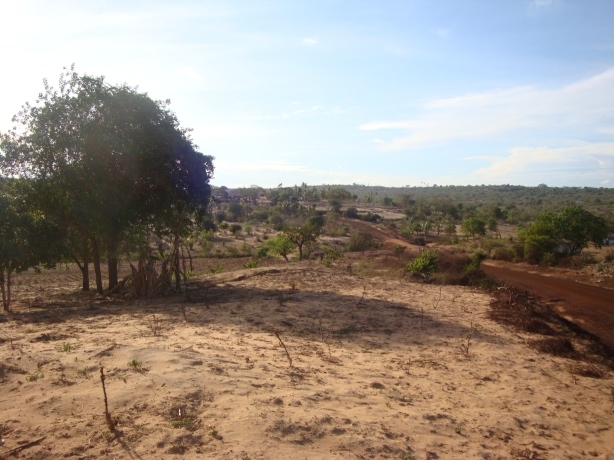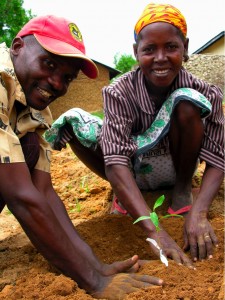The following is a guest blog post written by Matthew Foerster, project associate at KOMAZA, a non-profit working to connect small-scale farmers with high-value markets to improve livelihoods.
In Africa, barriers to raising agricultural production are numerous and complex. Lack of improved seeds and crop inputs, inadequate infrastructure to bring crops to market, tenuous land rights and an insufficient amount of finance for smallholder farmers all inhibit the potential of Africa’s agricultural sector.

Last week, a group of international policymakers, researchers and donors gathered in Ghana to discuss what can be done to improve the situation and put Africa on a path toward lasting food security and economic prosperity.
Spearheaded by Kofi Annan, the African Green Revolution Forum focused on new initiatives to scale-up investment in African agriculture, including a specific focus on the so-called “breadbaskets,” areas with nutrient-rich soil and adequate rainfall.
With the right policies and steady investment in smallholder farmers, there is tremendous potential for African countries to produce their own food and even become net exporters, and it’s true that the best chances of success will be in these breadbasket areas. However, we must not overlook the unique challenges and needs of farmers living in Africa’s arid- and semi-arid regions. We must remember that there are millions of rural dryland farmers who do not enjoy the benefits of frequent rainfall and fertile soil. These farmers take on extraordinary risk and are faced with minimal and sometimes non-existent returns when trying to produce staple food crops on their eroded land. And as research suggests, these are the same people who are most vulnerable to the effects of climate change. What role will they play in a green revolution?
KOMAZA, an early-stage non-profit social enterprise, has developed a model that provides sustainable economic opportunities for rural farmers living in these semi-arid regions.
Where KOMAZA works in rural Kenya, infertile soil and frequent drought make traditional farming nearly impossible. Unlike the rich and fertile grain belts of Kenya’s Western and Rift Valley provinces, the country’s Coast province suffers from incredibly dry, degraded soil and low, erratic rainfall. Forget trying to grow major cash crops like coffee, tea or fruit here; it’s essentially like trying to farm in a desert. Only for a few weeks in May and June does maize grow well in this part of the country; the land sits empty most of the year.

We’ve found a way to help dryland farmers capitalize on their large tracts of barren land by helping them plant and maintain small-scale, income-generating tree farms. Unlike seasonal crops that are dependent on accurate timing of rainfall, trees can survive several months without water and can effectively utilize rain whenever it comes. With small-scale forestry, subsistence farmers can unlock the potential of their otherwise unproductive, fallow land.
A half-acre of fast-growing, drought-resistant trees allows farmers to earn unprecedented amounts of income over a ten-year cycle as the trees are harvested, processed and sold as high-quality wood products – creating everything from lumber to electricity poles to satiate Kenya’s massive and growing wood market.
Sustainable forestry already delivers incredible profits to large companies, but the economic potential of trees has been out of reach for Africa’s poorest farmers. Although most dryland farmers have surplus land and labor, they have not been able to unite the full value chain required for profitable tree farming.
This is the unique need and opportunity that KOMAZA seeks to address. We are partnering with rural farmers, from seedling to market, to build Africa’s first non-profit forestry company. KOMAZA has already planted over a quarter-million trees with 1,000 families. Within the past three months, we have recruited an additional 1,500 farmers who will establish small-scale farms in April. By the end of 2012, we aim to plant three million trees with 10,000 farmers.
By helping subsistence farmers plant trees as well as short-term crops on half-acre, family-owned plots, this model empowers Africa’s indigenous communities whose livelihoods depend on natural resources. Simply put, it’s a low-risk, high-return investment ideally suited for semi-arid environments. By integrating poverty alleviation with environmental conservation, microforestry offers an alternative to rampant deforestation and provides Africa’s dryland farmers—those who may be the last to benefit from a green revolution—with a sustainable source of income to make life-long investments in their families’ futures.
There is obviously no panacea to the challenges of food insecurity and poverty in Africa, especially in marginal, semi-arid regions. But I am among a group of about 120 people working for KOMAZA who believe that small-scale, community-based tree farming will help lift thousands of families out of rural poverty. We believe this is one example of a market-based approach that has the potential to bring about lasting environmental, social and economic change for those who need it most – farmers living in regions where the rain doesn’t fall.
Matthew Foerster is a project associate with KOMAZA.

Danielle Nierenberg, an expert on livestock and sustainability, currently serves as Project Director of State of World 2011 for the Worldwatch Institute, a Washington, DC-based environmental think tank. Her knowledge of factory farming and its global spread and sustainable agriculture has been cited widely in the New York Times Magazine, the International Herald Tribune, the Washington Post, and
other publications.
Danielle worked for two years as a Peace Corps volunteer in the Dominican Republic. She is currently traveling across Africa looking at innovations that are working to alleviate hunger and poverty and blogging everyday at Worldwatch Institute’s Nourishing the Planet. She has a regular column with the Mail & Guardian, the Kansas City Star, and the Huffington Post and her writing was been featured in newspapers across Africa including the Cape Town Argus, the Zambia Daily Mail, Coast Week (Kenya), and other African publications. She holds an M.S. in agriculture, food, and environment from Tufts University and a B.A. in environmental policy from Monmouth College.








